Sai cosa distingue la tessitura e il ricamo a macchina nell'universo tessile?
La tessitura è il classico processo di fili intrecciati per costruire tessuti da zero, essenzialmente, È così che i filati grezzi vengono trasformati in stoffa.
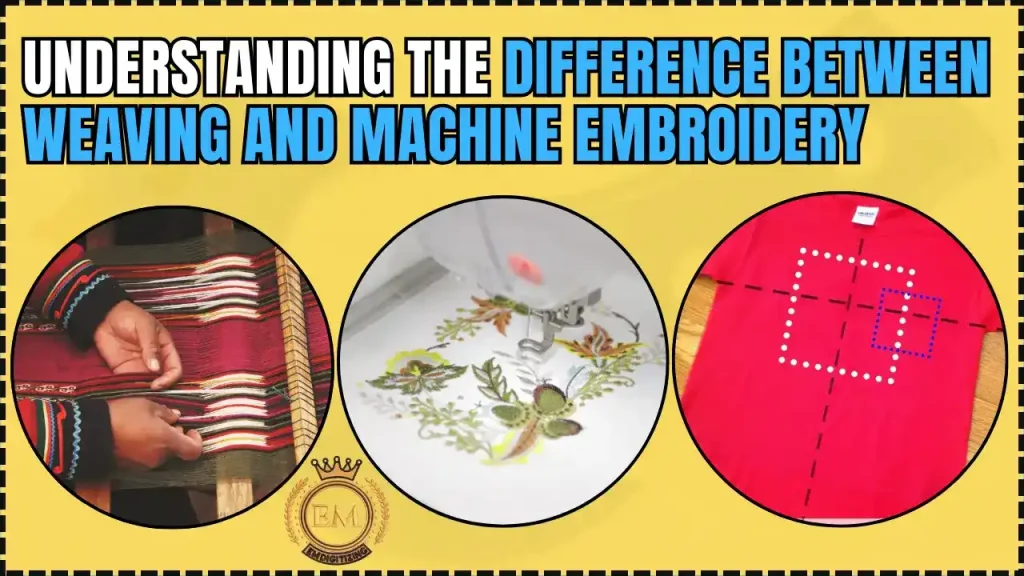
Nel frattempo, Il ricamo a macchina comporta cuciture intricate su tessuto esistente, Elevandolo con disegni decorativi e colorati. Queste tecniche modellano il mondo dei tessuti in modi unici, Contribuire a tutto, dalla tela robusta alle delicate lenzuola ricamata.
Let’;Salire le caratteristiche distintive e le applicazioni di ciascuno per comprendere il loro impatto sui nostri tessuti quotidiani.
Comprendere la differenza tra tessitura e ricamo a macchina
Cosa sta tessi?
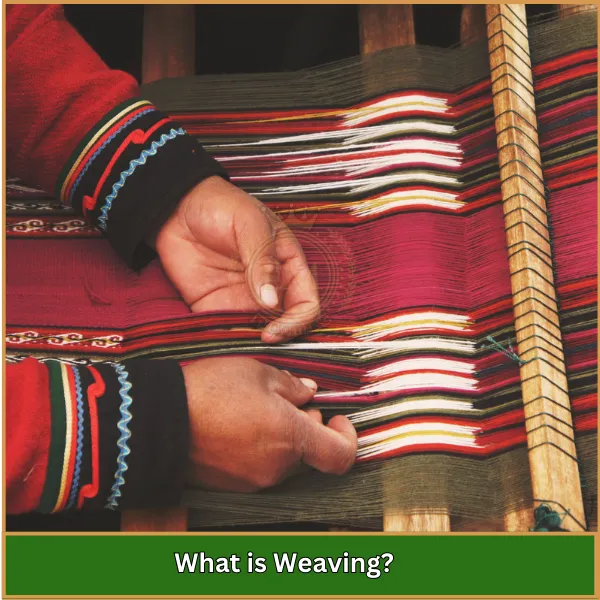
La tessitura è un metodo di produzione tessile che prevede l'interlacco di due serie di thread: Warp (longitudinale) e trama (laterale)—I angoli giusti per creare tessuto. Questo processo si svolge in genere su un dispositivo chiamato telaio.
Tipi di tessitura
Esistono diversi tipi di tessitura, ognuno con le sue caratteristiche e i suoi usi.
1. Tessitura semplice
- I fili si alternano sopra e sotto.
- Esempi: Mussola, chiffon.
- Caratteristiche: Superficie durevole e piatta.
2. Twill Weave
- Crea un modello diagonale passando la trama sopra e sotto più fili di ordito.
- Esempi: Denim, HoundSnooth.
- Caratteristiche: Forte e resistente alle rughe.
3. Tessitura di raso
- Thread di trama multipli passano su meno thread di ordito, risultante in una superficie lucida.
- Esempi: Raso, piovere.
- Caratteristiche: Attenzione lussuosa, meno resistente.
4. Tessitura del cestino
- Utilizza coppie di filati in entrambe le direzioni per un motivo a scacchiera.
- Caratteristiche: Spesso usato nel rivestimento.
5. Jacquard Weave
- Crea motivi intricati usando un telaio speciale.
Esempi: Broccato, damasco.
6. Tessitura di leno o garza
- Coppie di fili di ordito si girano l'uno intorno all'altro per un tessuto aperto.
Caratteristiche: Leggero e arioso.
Vantaggi e svantaggi della tessitura
È stato usato per secoli per creare tessuti, E come qualsiasi tecnica, Ha un proprio set di vantaggi e svantaggi a seconda del materiale e dello scopo.
Vantaggi
- Durata
- Varietà di trame
- Economico per la produzione di massa
Svantaggi
- Complessità di design limitato
- Setup che richiede tempo
- Richiede manodopera qualificata
Cos'è il ricamo a macchina?
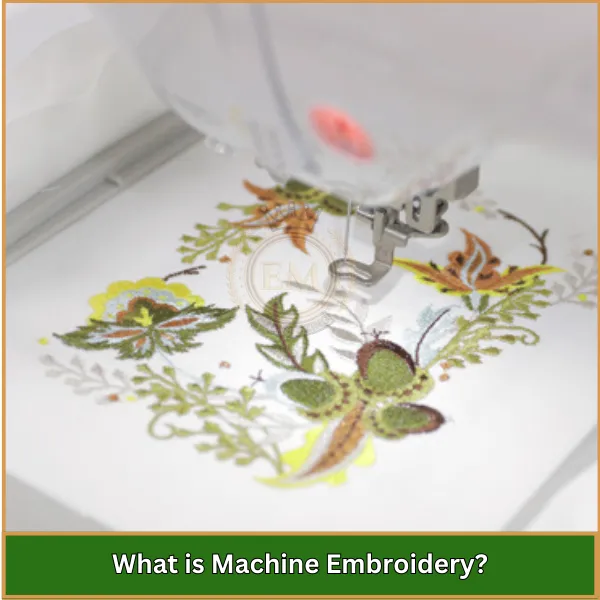
È un metodo per decorare il tessuto usando una macchina da cucire o uno specializzato macchina da ricamo Per creare pattern e design intricati.
Questa tecnica consente un'elevata precisione e coerenza, rendendolo popolare in applicazioni sia commerciali che personali.
Può essere utilizzato per il branding, scopi decorativi, e creazione di oggetti personalizzati.
Tipi di ricami a macchina
Esistono vari tipi di ricamo a macchina, ognuno adatto a diverse applicazioni e esigenze.
1. Ricamo a macchina libera
- Utilizza una macchina da cucire a zigzag standard.
- L'operatore sposta manualmente il tessuto sotto l'ago per creare design.
- Ogni design è unico e non può essere facilmente riprodotto.
2. Ricamo a macchina computerizzata
- Coinvolge macchine controllate da un computer.
- I progetti sono pre-programmati e possono essere eseguiti automaticamente.
- Elimina la necessità di una rethreading manuale per i design multicolori.
3. Macchina da ricamo a testa singola
- Progettato per corse di produzione più piccole.
- Presenta una testa che può ricamare un oggetto alla volta.
- Ideale per pezzi personalizzati o piccoli ordini.
4. Macchina da ricamo a più testa
- Contiene più teste, consentendo ricami simultanei su diversi oggetti.
- Efficiente per la produzione di massa mantenendo la qualità.
5. Macchina da ricamo Schiffli
- Utilizza più aghi che penetrano contemporaneamente il tessuto.
- Comunemente impiegato per produrre progetti intricati su pizzo e tessuti simili.
6. Ricamo a guida a mano cornely
- Richiede un operatore per guidare manualmente la macchina.
- Produce punti speciali come punto a catena e punto raso, Spesso utilizzato nelle applicazioni di interior design.
Vantaggi e svantaggi del ricamo a macchina
È un modo veloce e preciso per aggiungere disegni al tessuto, Ma ha anche il proprio set di pro e contro in base agli strumenti e alle tecniche utilizzate.
Vantaggi
- Alta precisione e coerenza
- Velocità
- Versatilità nel design
Svantaggi
- Costi iniziali più elevati
- Tocco meno personale
- Complessità nella programmazione
Differenza tra tessitura e ricamo a macchina
Tessitura e ricamo a macchina hanno ruoli diversi nel settore tessile, con ognuno usando i propri metodi e risultati. Ecco le differenze principali:
- Tecnica di produzione
- Scopo
- Attrezzatura utilizzata
- Flessibilità del materiale
- Posizionamento del progetto
- Set di abilità
- Prodotto finale
- Complessità del modello
- Velocità di produzione
- Personalizzazione
1. Tecnica di produzione

Tessitura e ricamo a macchina: La tessitura prevede l'integrazione di due set di filati o fili ad angoli reciproci per creare tessuto.
Questo metodo si basa su un telaio e il processo può produrre tessuti che vanno dai semplici tessuti di cotone a arazzi complessi.
Ricamo, d'altro canto, implica l'uso di un ago e un filo per aggiungere punti decorativi a una base di tessuto, spesso dopo che il tessuto è stato tessuto.
2. Scopo
La tessitura serve allo scopo principale di creare tessuti da fili o filati. Il ricamo viene utilizzato per abbellire il tessuto con motivi o immagini, Migliorare l'estetica e talvolta il valore funzionale del materiale con colore aggiuntivo, struttura, e progettazione.
3. Attrezzatura utilizzata
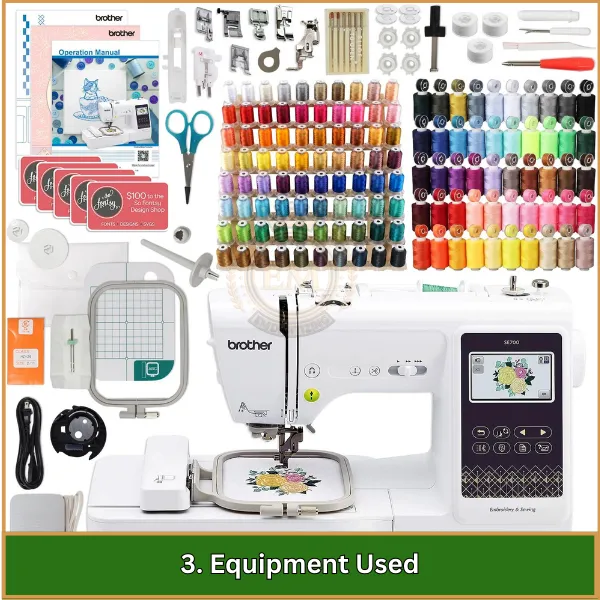
L'attrezzatura principale per la tessitura e il ricamo include telai per la tessitura, che possono essere semplici cornici a mano o macchine automatizzate complesse.
Il ricamo utilizza macchine specializzate in grado di gestire più Discussioni e colori, progettato per applicare design intricati sul tessuto.
4. Flessibilità del materiale
La tessitura utilizza in genere materiali come filati in cotone, lana, seta, o fibre sintetiche progettate per formare tessuti durevoli. I materiali da ricamo includono non solo fili tradizionali, ma anche fili speciali come i metallici, sete, e quelli usati nel ricamo perle e nella tessitura del perline per aggiungere consistenza e dettagli decorativi.
5. Posizionamento del progetto
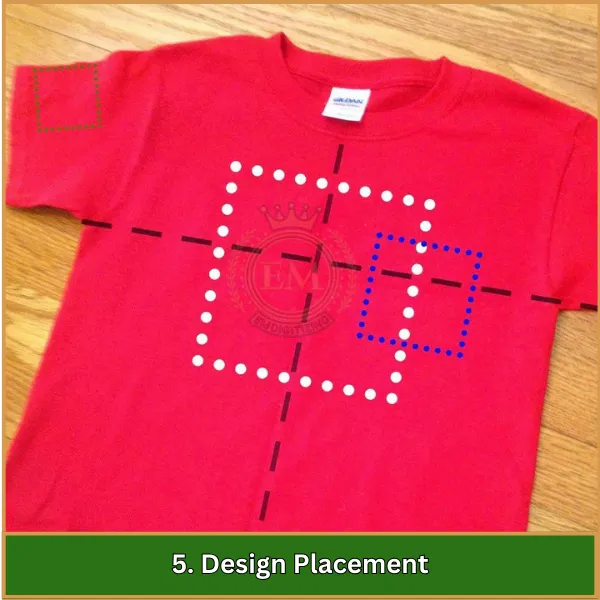
Nella tessitura, Gli elementi di design devono essere pianificati e integrati nel tessuto mentre viene creato sul telaio. Il ricamo consente un'applicazione di progettazione post-fabrica, Fornire flessibilità per aggiungere opere d'arte personalizzate e dettagliate ovunque sul materiale esistente.
6. Set di abilità
La tessitura richiede una comprensione della meccanica del telaio, O. Ricamo richiede abilità nella digitalizzazione del design, configurazione della macchina, e la gestione di varie tecniche di cucitura per ottenere effetti artistici desiderati.
7. Prodotto finale
I prodotti della tessitura sono tessuti che formano i mattoni di altri prodotti, come indumenti e arredi per la casa. Gli articoli ricamati rappresentano spesso i prodotti finiti, Con un fascino visivo migliorato con superfici decorate.
8. Complessità del modello
La complessità del modello nella tessitura è limitata dalle capacità del telaio e può essere geometrica e ripetitiva. Il ricamo offre una gamma più ampia di possibilità, Abilitare disegni altamente dettagliati ed elaborati che possono includere motivi di punto diversi, gradienti, e complessità simile all'immagine.
9. Velocità di produzione
La tessitura può produrre grandi quantità di tessuto relativamente rapidamente, soprattutto con i telai automatizzati moderni. Ricamo, lavoro particolarmente dettagliato, è più dispendioso in termini di tempo, Concentrarsi su dettagli meticolosi sulla velocità, rendendolo meno efficiente per la produzione di tessuti su larga scala ma ideale per creazioni su misura e artigianali.
10. Personalizzazione
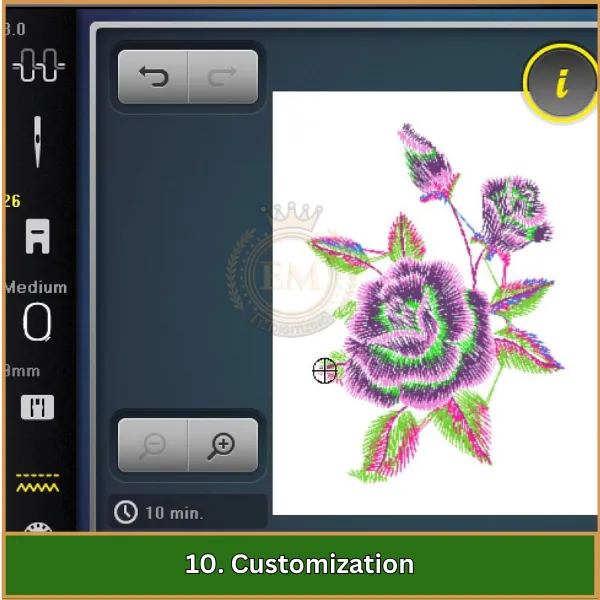
La tessitura offre opzioni di personalizzazione limitate che dipendono in gran parte dall'impostazione di telai e dai filati utilizzati. Il ricamo offre ampie opportunità di personalizzazione, consentendo una vasta gamma di colori, disegni, e tocchi personali da aggiungere a qualsiasi tessuto dopo che è stato tessuto.
Decidere tra tessitura e ricamo a macchina per i tuoi progetti
Quando decidi tra queste tecniche per i tuoi progetti tessili, Considera i seguenti punti:
Scopo del progetto:
- Usa la tessitura se è necessario creare tessuto da zero: Ideale per creare tessuti con caratteristiche specifiche come lo spessore, durabilità, e consistenza.
- Choose machine embroidery if you’;sta cercando di aggiungere dettagli decorativi al tessuto esistente, Perfetto per disegni personalizzati o branding.
Requisiti del progetto:
- La tessitura ti consente di personalizzare gli aspetti fondamentali del tessuto, Adatto per applicazioni che richiedono creazione di materiali personalizzati.
- Il ricamo a macchina migliora e abbellisce il tessuto con colorato, modelli intricati, Ideale per progetti artistici o marchio commerciale.
Comprendere ciò che ogni processo offre ti aiuterà a fare la scelta migliore per le tue esigenze specifiche, whether you’;Re creazione di nuovo tessuto o miglioramento di quello esistente con bellissimi ricami.
Parole finali
Con una chiara comprensione della tessitura e del ricamo a macchina, È facile vedere come il ricamo aggiunga un tocco speciale a qualsiasi tessuto. Se stai cercando di aggiungere design personalizzati al tuo progetto, EMDigitalizzazione può semplificare quel processo.
Offriamo alta qualità servizi di digitalizzazione che trasformano le tue opere d'arte in file di ricamo pronti. I nostri servizi sono veloci, affidabile, e conveniente.
Più, come nuovo cliente, Otterrai un'incredibile 50% fuori dal tuo primo ordine! Inizia con EmDigitizing e guarda i tuoi disegni prendere vita senza sforzo.
Domande frequenti
La cucitura si riferisce all'uso di un ago e un filo per unire i pezzi di tessuto o per creare disegni decorativi su tessuto. Tessitura, d'altro canto, è il processo di interlacciamento di due serie di thread, l'ordito e la trama, ad angolo retto per formare un tessuto.
Esistono due tipi principali di ricamo a macchina: ricamo a mano libera, Dove l'utente controlla manualmente le cuciture su una macchina da cucire di base, e ricami computerizzati, che cuce automaticamente i disegni digitalizzati utilizzando una macchina da ricamo specializzata.
La tessitura è il processo di realizzazione del tessuto intrecciando due set distinti di filati o fili, Chiamato l'ordito e la trama, su un telaio.
Il ricamo a macchina è un metodo per creare motivi sul tessuto usando un cucito o macchina da ricamo. I disegni sono pre-programmati nella macchina, che li cuce automaticamente sul tessuto.
